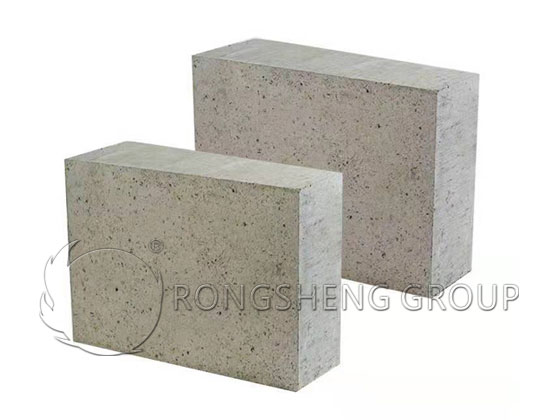The particle gradation of phosphate bricks is a process ratio of large at both ends and small in the middle. Coarse particles act as skeleton supports. The fine powder plays a role in filling the gaps, and the matrix part of the fine powder wraps and adheres to the coarse particles. The bonding agent uses phosphoric acid, so the product has high strength and good wear resistance. As a refractory brick manufacturer, “Why are phosphate refractory bricks wear-resistant?” I also accept this explanation.

Production Process of Phosphate Refractory Bricks
During the production process, the ratio of coarse particles to fine powder of phosphate bricks directly affects the strength and wear resistance of the bricks. Therefore, the process ratio requires the principle of close packing.
Phosphoric acid itself has no binding properties and will form aluminum phosphate when in contact with refractory materials. As the temperature increases, the ions in the phosphate group will form molecules with chain, network, and space skeleton structures, and polymerization and adhesion will occur, giving the product strength.
However, when phosphoric acid is added to refractory bricks, there are certain concentration requirements. When used, phosphoric acid should be dissolved and boiled in proportion to aluminum hydroxide. Nowadays, there are also boiled finished products on the market, which are packed in barrels for use. The specific gravity is 1.6~1.65, and the proportion of refractory bricks added is 6~8%.
When producing phosphate bricks, the materials must be trapped for 24 hours before pressure forming. The purpose of trapped material is to react the phosphoric acid with the iron in the aggregate and fine powder and then release the gas. If the material is trapped for too short a time, the phosphoric acid will react with the iron in the material to generate gas, which will easily cause spalling during the brick pressing process.

In addition, the tonnage of the press is also an important link in the wear resistance of phosphate bricks. Because if the tonnage of the press is too small, the volume density will be low and it will not be able to achieve a certain degree of wear resistance. Currently, manufacturers use 630-1,000-ton presses to produce phosphate bricks, so that the phosphate bricks have a high density and stronger wear resistance.
It should be noted that if phosphate bricks are produced in winter while implementing the trapping system, the temperature of the trapping material must be above 25°C for trapping. It must be covered with a plastic sheet for 24 hours before use. If the temperature is low, the materials in the raw materials will freeze. In this way, it is easy to stick to the mold when the bricks are pressed and formed, causing pitted surfaces and affecting the quality of the phosphate bricks.
Phosphate bricks have gelling properties at room temperature. When heated to a certain temperature, acid aluminum phosphate can turn into aluminum pyrophosphate and aluminum metaphosphate, causing dehydration polymerization. As the temperature increases, in addition to polymerization, aluminum metaphosphate can also decompose, further increasing the density of the combination. Its performance characteristics are mainly high strength, strong corrosion resistance, low porosity, and good thermal stability. Especially when used below 1200~1300℃, it has good wear resistance and strong alkali corrosion resistance.
To solve the problem of using refractory lining materials in easy-to-wear parts, Rongsheng refractory brick manufacturers can provide high-quality phosphate bricks and phosphate combined high alumina bricks. Shipping is fast, product quality is reliable, and customer service is guaranteed.